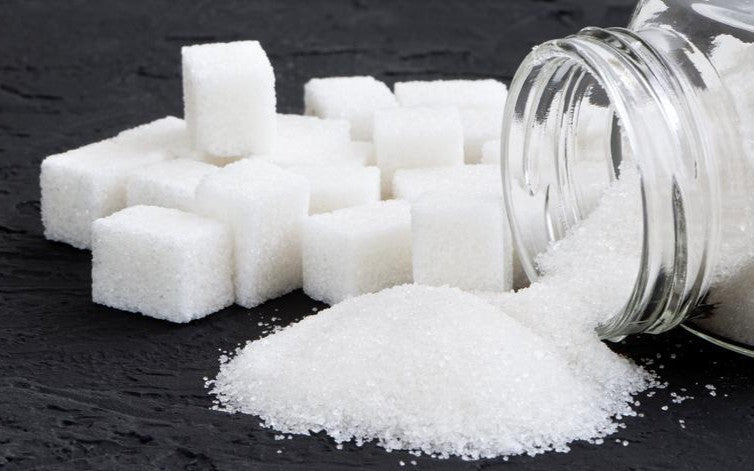
How to Identify Hidden Sugars in Everyday Foods
Sugar is sneaky. It’s not just in the obvious culprits like cookies, candy, and soda—it’s hiding in foods you’d never suspect, like bread, salad dressing, and even “healthy” snacks. These hidden sugars can quietly add up, sabotaging your health goals and leaving you wondering why your energy is crashing or your cravings are spiraling out of control.
But don’t worry! Learning to spot hidden sugars in everyday foods doesn’t mean giving up your favorite meals. It’s about becoming a label detective and making more informed choices. Here’s how to uncover the sweet truth behind your food.

Why Hidden Sugars Matter
Excess sugar intake has been linked to weight gain, energy crashes, and long-term health issues like heart disease and diabetes. The tricky part is that many of us consume more sugar than we realize because it’s tucked away in unexpected places.
According to the American Heart Association, the recommended daily limit for added sugar is:
- Women: 25 grams (6 teaspoons)
- Men: 36 grams (9 teaspoons)
A single serving of some “healthy” granola bars or flavored yogurts can blow through that limit in one go. By identifying hidden sugars, you can take control of your intake without cutting out the foods you love.
Common Foods Where Sugar Hides
Hidden sugars lurk in both sweet and savory foods. Here are some surprising examples:
- Breakfast Foods: Granola, flavored oatmeal, and cereals are often packed with added sugar to enhance flavor. Even “organic” or “whole grain” varieties aren’t immune.
- Condiments: Ketchup, barbecue sauce, and salad dressings can be sugar bombs. A single tablespoon of ketchup contains about 4 grams of sugar.
- Beverages: Sports drinks, flavored waters, and even fruit juices often have as much sugar as soda. Don’t be fooled by “natural” labels—fruit concentrates are still added sugar.
- Snacks:Protein bars, dried fruits, and flavored nuts may seem healthy but often contain syrups or sweeteners for added taste.
- Breads and Sauces: Whole wheat bread, pasta sauces, and soups may have sugar added for texture or flavor balance.
How to Spot Hidden Sugars
1. Read Ingredient Lists
Sugar can appear under many disguises. Look out for these common aliases:
- Syrups: High fructose corn syrup, malt syrup, rice syrup
- “-oses”: Sucrose, fructose, glucose, dextrose, maltose
- Natural sweeteners: Honey, agave nectar, fruit juice concentrates
- Others: Molasses, caramel, evaporated cane juice
- Tip: Ingredients are listed in descending order by weight. If sugar or one of its aliases is near the top, the product likely contains a lot of it.
2. Check the Nutrition Label
The “Added Sugars” section on a nutrition label is your best friend. It tells you exactly how much sugar has been added to the product, separate from naturally occurring sugars.
- Tip: Compare labels across brands. For example, some pasta sauces have 10 grams of added sugar per serving, while others have none.
3. Be Wary of “Health Halos”
Labels like “organic,” “low-fat,” or “all-natural” don’t guarantee a product is low in sugar. Many “healthy” snacks use sugar to make up for flavor lost in processing.
- Example: A low-fat yogurt might contain 20 grams of sugar from added syrups or fruit purees.
4. Look for Naturally Sweetened Alternatives
Instead of processed foods with hidden sugars, opt for whole foods or minimally processed items.
- Example: Choose plain Greek yogurt and add fresh fruit for sweetness instead of buying flavored varieties.
Practical Tips to Cut Down on Hidden Sugars
1. Cook at Home
Homemade meals give you full control over ingredients, reducing your exposure to hidden sugars in processed foods.
2. Flavor Naturally
Use spices like cinnamon or vanilla to sweeten foods naturally. A dash of these can elevate flavor without added sugar.
3. Dilute Sweetened Beverages
If you can’t give up your favorite juice or flavored water, dilute it with plain water to reduce sugar per serving.
4. Snack Smarter
Swap sugary snacks for whole foods like nuts, fresh fruit, or veggies with hummus.
5. Choose Unsweetened Options
Look for “unsweetened” or “no added sugar” labels on products like almond milk, applesauce, and canned fruits.
Why Cutting Hidden Sugars is Worth It
Reducing hidden sugar intake can lead to:
- More Stable Energy Levels: No more sugar highs followed by mid-afternoon crashes.
- Better Weight Control: Fewer empty calories help you stay on track.
- Improved Taste Sensitivity: Over time, your taste buds adjust, making naturally sweet foods like fruits more satisfying.
The goal isn’t to eliminate sugar completely—it’s about being intentional with your choices. By cutting down on hidden sugars, you’ll free up room to enjoy occasional treats guilt-free.
The Takeaway
Hidden sugars are everywhere, but they’re not impossible to find. By learning to read labels, recognizing sugar aliases, and choosing whole foods whenever possible, you can reduce your sugar intake without feeling deprived.
Take it step by step. Start by swapping out one or two sugary staples in your diet, and watch how your energy stabilizes and cravings diminish. You’ve got this—because sweet success tastes better when it’s intentional.
Scientific References
1. Health Impacts of Excess Sugar
Johnson, R. J., et al. (2007). Potential role of sugar (fructose) in the epidemic of hypertension, obesity, and the metabolic syndrome. The American Journal of Clinical Nutrition, 86(4), 899-906. Link
2. Sugar and Hidden Calories Lustig, R. H. (2012). Fructose: metabolic, hedonic, and societal parallels with ethanol. The Journal of the American Dietetic Association, 112(5), 739-742. Link
3. Food Labels and Sugar Content
Bernstein, J. T., et al. (2016). Examining the relationship between sugar content in food and its labels. Public Health Nutrition, 19(16), 2993-3002. Link
Meet Fitnexa, your AI-driven companion that turns everyday habits into a positive, uplifting journey. From effortless meal analysis (including recipe suggestions) to personalized coaching and real-time support, Fitnexa keeps you on track toward lasting wellness — so you can stay younger, live longer.
https://apple.co/4hr8JGW





Leave a comment
This site is protected by hCaptcha and the hCaptcha Privacy Policy and Terms of Service apply.